


When all the pieces of the baking process are just right, a loaf of sourdough bread will have a beautifully controlled rise in the oven with a crust that opens dramatically along cuts made during scoring. If everything goes well, these cuts open up to form defined ridges that peel back and away from the main loaf, creating what many bakers call an “ear.”
And while you might see these sourdough ears as mostly an aesthetic addition to a loaf, they are also indicators of success in each step of the bread baking process. They show the baker’s skill in harnessing vigorous fermentation, imparting sufficient dough strength, shaping properly, proofing appropriately, and the last step in the process: scoring effectively.
First, let’s look at how and why an ear is formed, then see some practical ways to promote its formation.
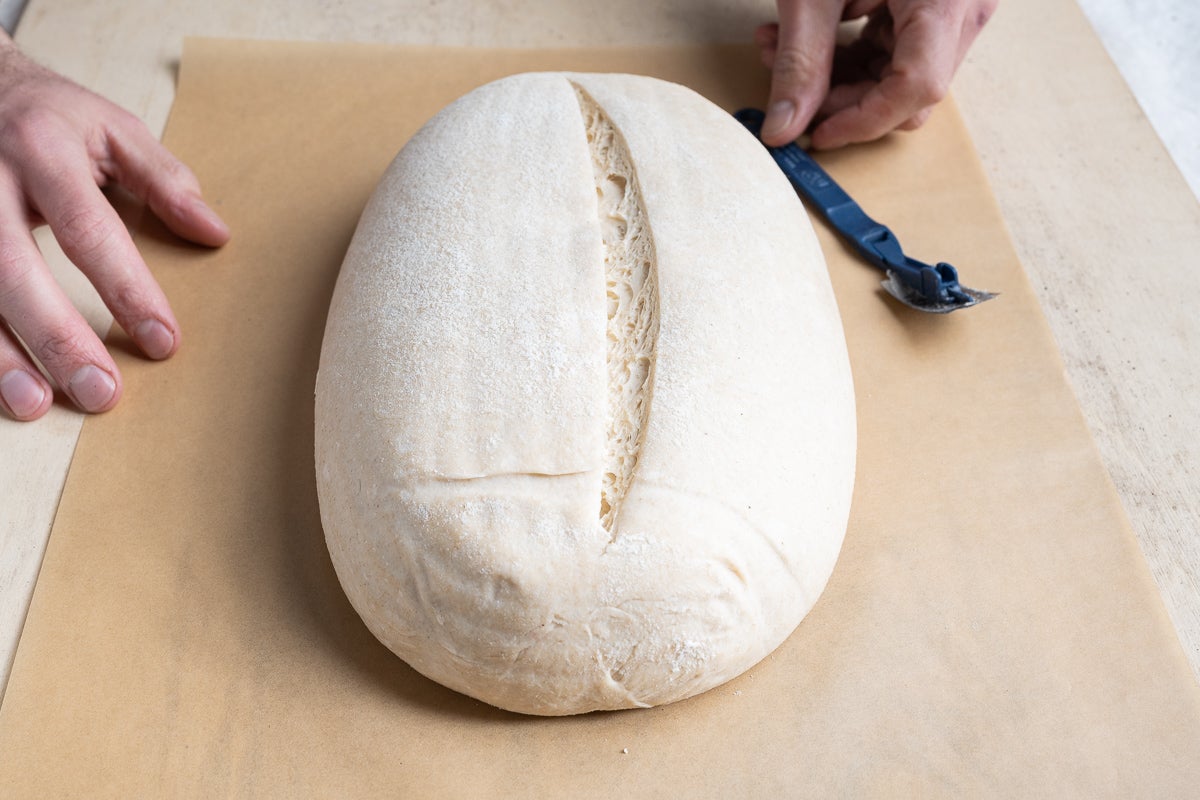
When you shape bread dough with sufficient tension, you create what I like to think of as a taut wrapper outside the dough. Much like the thin but strong rubber of a water balloon, the dough-wrapper works to contain all the fermentation going on inside your dough: bubbles expanding, contracting, coalescing — an intricate three-dimensional lattice of fermented dough. And this wrapper does its job of keeping the dough’s structure all the way from shaping through proofing, until the loaf is eventually scored and baked.
When you bake your dough, the goal is to bake it about 10% to 20% shy of what would be considered fully fermented. This way, there’s still plenty of “life” left in the dough to rise high and expand outward in the oven. The taut wrapper created during shaping stretches outward as the loaf expands in the oven, and if left unscored, will eventually rupture erratically. When we score our bread dough before baking, we’re intentionally providing places for the dough to split open, which allows for a steady rise in the oven.
The spots we score into the dough end up pushing up and outward, forcing the thin, taut wrapper to peel back and create the ear. And this ear is precisely that: a flap of dough that sticks out a bit from the surface of the loaf.
There’s an undeniable aesthetic charm when you see a loaf of bread with a dramatic ear that’s colored deeply in the oven. And this ear can be a single long one that runs the loaf length, or a series of small ears that form an intricate design on the top of the loaf. As they often say, we eat first with our eyes!
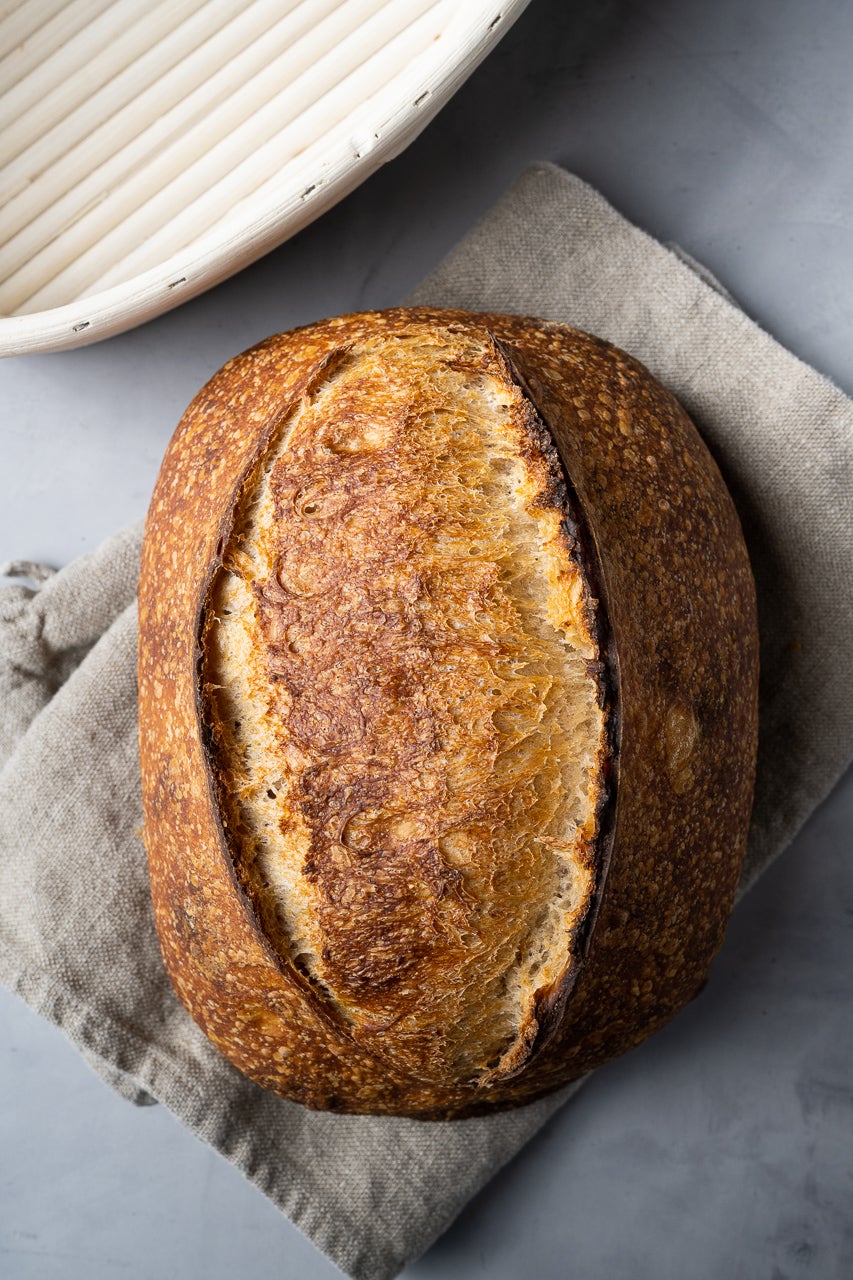
But aside from the pure aesthetics, an ear that forms just right hints at what the loaf itself might be like. An ear that’s just right — not overly large, and not extremely small — indicates a loaf that’s fermented to the right degree and one that’s likely going to have an appropriately open interior. It’s just one of the many signs bakers use to judge whether a loaf was made with attention to each step of the baking process.
In my bread baking, I usually like to do one of two types of scoring: one where the lame (the blade used for scoring) is at a shallow angle to the dough’s surface, and the other where the lame is straight on at a 90° angle. The two different angles encourage two different types of openings when the dough is baked in the oven.
If you don't have a lame, you can use a razor blade or a very sharp knife to score. I prefer a razor blade, as it’s usually sharper and thinner than a knife, but a knife will certainly work too.
Regardless of the style of scoring, it’s always important to score deeply enough to cut into the dough at least below the outer skin (or wrapper, to use my previous terminology). Usually, the outermost 1/4” or so of the dough is a little drier and clearly visible after scoring. If you score and find there are points that you didn’t cut in deeply enough, go over that area with your lame to score in a little farther.
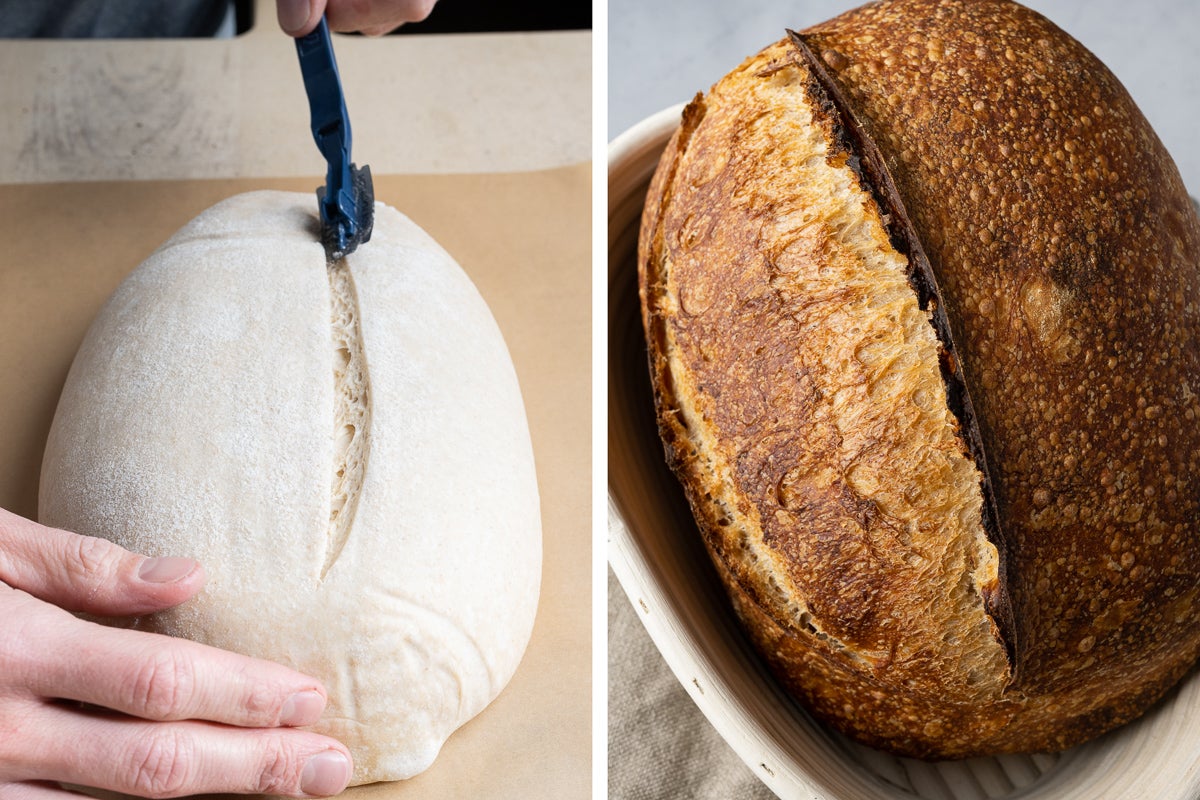
The shallow angle promotes more of a peeling back effect. As the dough is rising in the oven, the taut, outside wrapper of the dough peels back in one big flap, anchored at the top and bottom spots where the score began and ended, respectively. This flap gets pushed up and to the side as fermentation rapidly accelerates due to the oven’s heat, which allows the dough to push up and outward through the scored area.
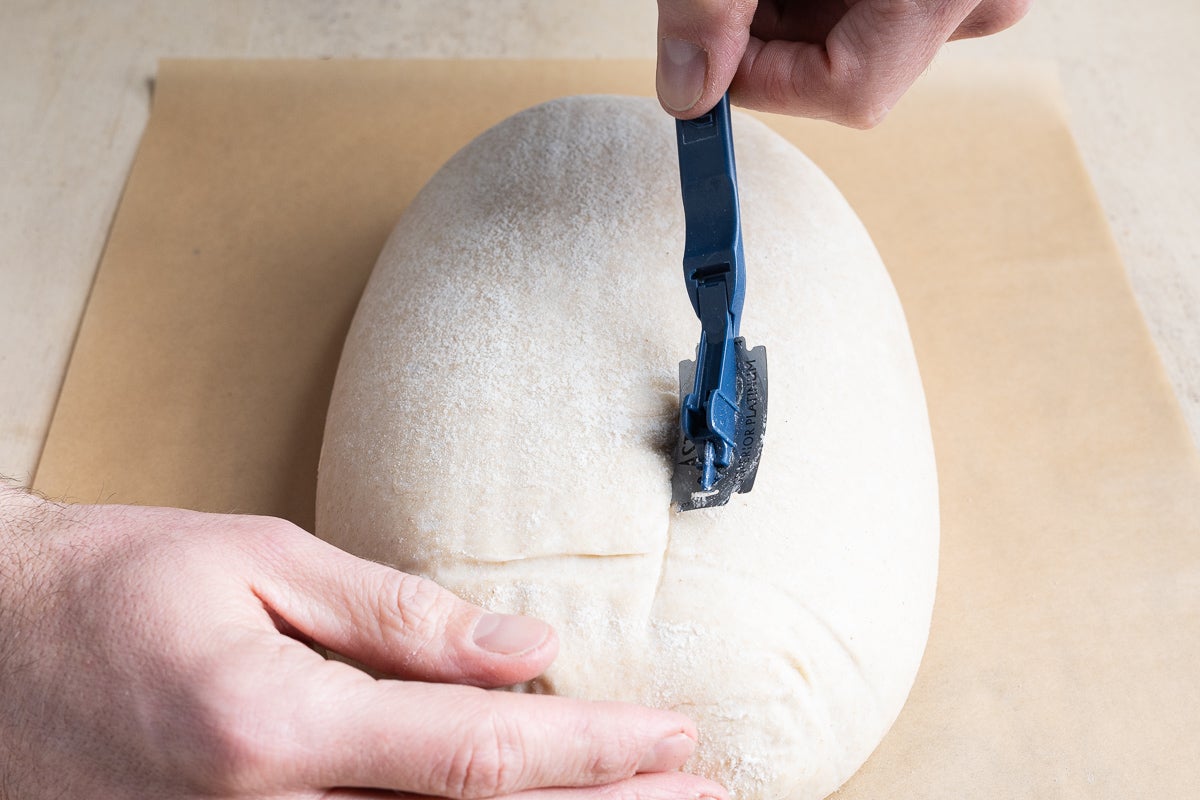
For this style of scoring, I like to use a blade that’s slightly curved. When cutting at a shallow angle, the blade's gentle curve helps exaggerate the formation of a little flap in the dough. This angled flap is what will peel back as the dough rises in the oven. Again, be sure the blade cuts in deeply enough to create a cut that’s at least 1/4" to 1/2" deep to ensure the score doesn’t fuse back together when the dough expands in the oven.
Scoring dough with a straight-on angle promotes more of a splaying open effect. Think of it like opening a book, where the book’s spine is placed directly down on a table and the front and back cover are opened outward, allowing the center to push up and outward.
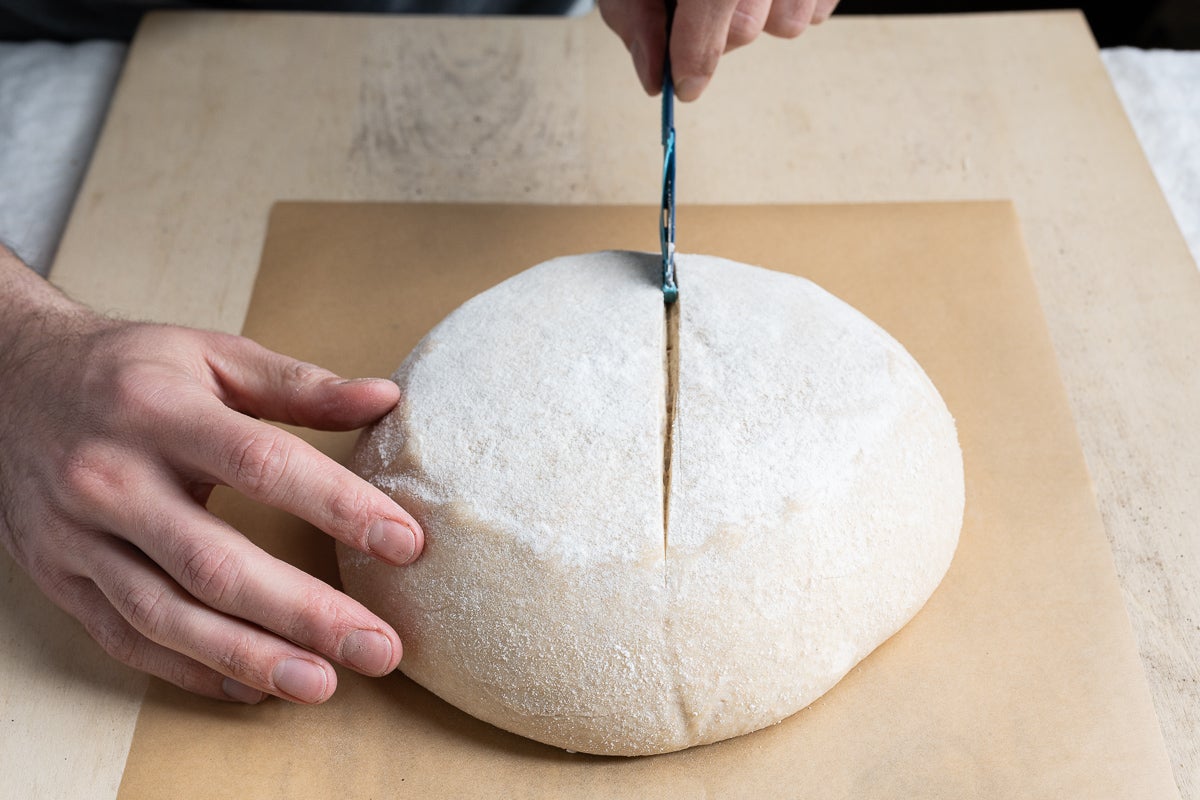
For this style of score, I prefer using a blade that’s not curved. There are many lame options with a straight blade, and some bakers prefer to hold a blade in their hand for this type of scoring.
If you only have a razor blade or sharp knife to score with, I find it works best to go with this straight-on method.
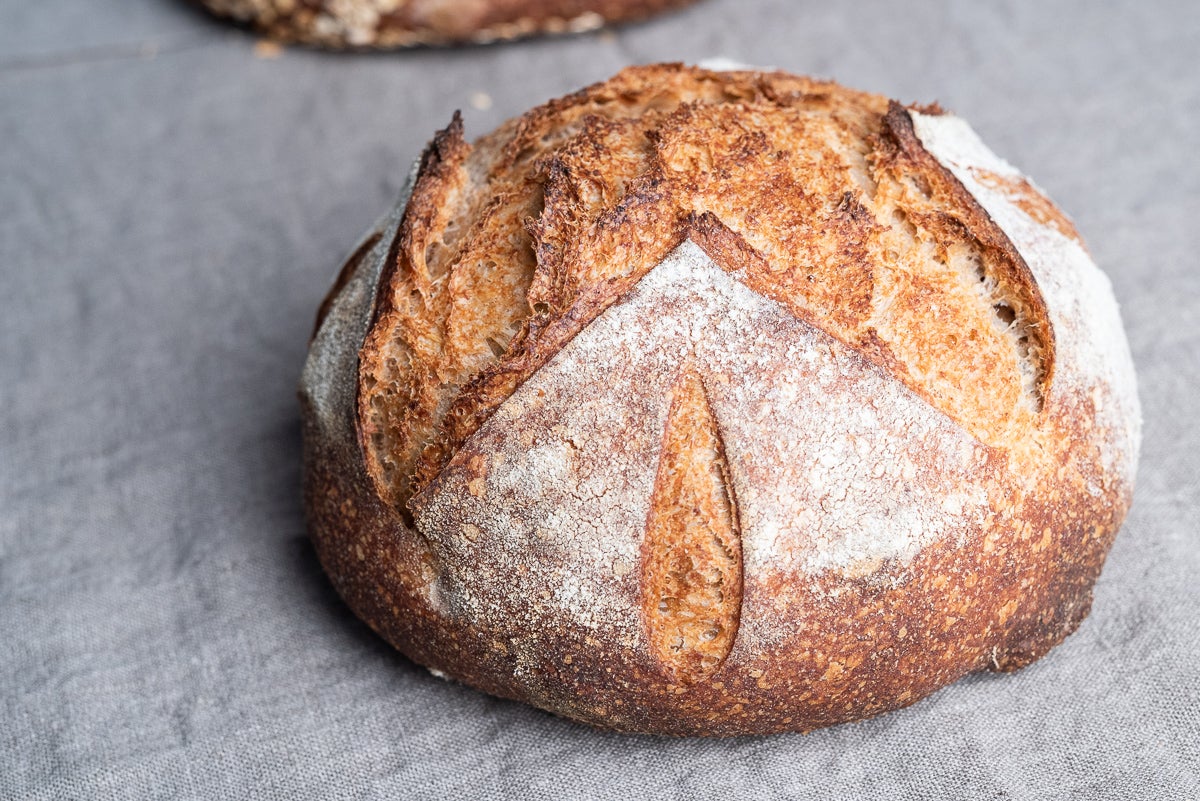
Sometimes you’ll bake a loaf and find the ear peels back dramatically, so that it almost looks like the entire loaf has split in half and opened up. In my experience, I’ve found this is usually a combination of a dough that’s slightly under-proofed and scored a little too deeply. The extreme oven spring needed for the loaf to open and split this way usually indicates the dough could have used a bit more fermentation time in bulk fermentation or final proof.
There are usually several possible causes for this. The first is over-proofed dough. If you push bulk fermentation or the final proof too far, your dough won’t spring up as vigorously in the oven. This lack of oven spring usually means the taut outer wrapper on your shaped dough never pulls back enough to peel away and form a distinctive ear.
Another reason you might have a score that never opens is your dough isn't strong enough or it’s over-hydrated. These two are somewhat related, as they result in a dough that lacks the structural integrity to support a score that opens wide. Instead, the dough sort of stays together all in one crust with no separation. The solution here is to reduce your dough's hydration or give it more strength with additional kneading time or additional stretch and folds during bulk fermentation.
Finally, in some cases, if your oven doesn’t have sufficient steam when you first start baking your loaf, the result can be a crust that’s similar to an under-strengthened dough: it forms a continuous crust with no separation. Steaming the oven helps keep the dough's outer wrapper moist and supple, allowing it to stretch before becoming hard. Without sufficient steam, the crust hardens too quickly, not giving it time to lift off and either peel back or splay open.
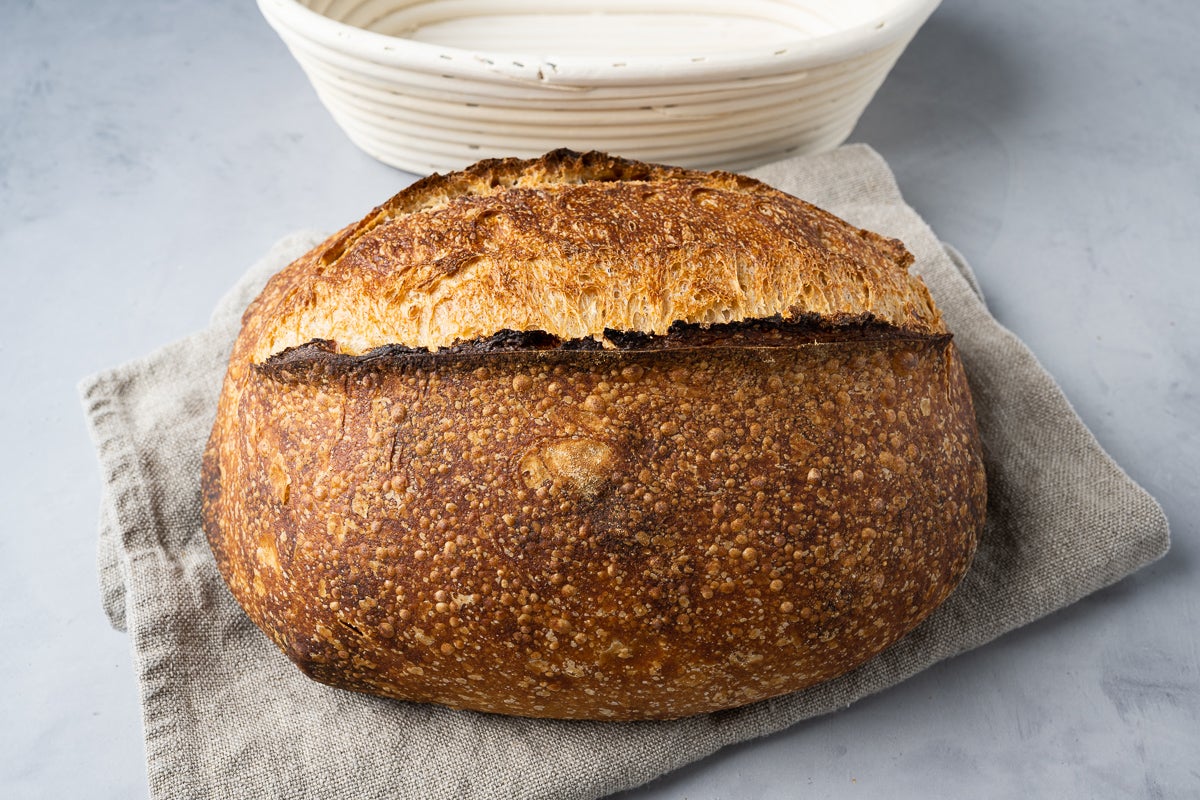
When baking bread, creating a beautiful ear is not only fun and a wonderful way to get creative, it’s also a way for you to show your skill as a baker. You can demonstrate how your control over every facet of the baking process has yielded a loaf that’s as beautiful as it is delicious. But above all, have fun with this! Play with creating different ears by adjusting your scoring depth, level of proof, and dough strength. And enjoy some beautiful fresh bread.
Ready to dive deep on more sourdough baking topics? Try other posts on producing an open crumb in sourdough and preshaping bread dough.